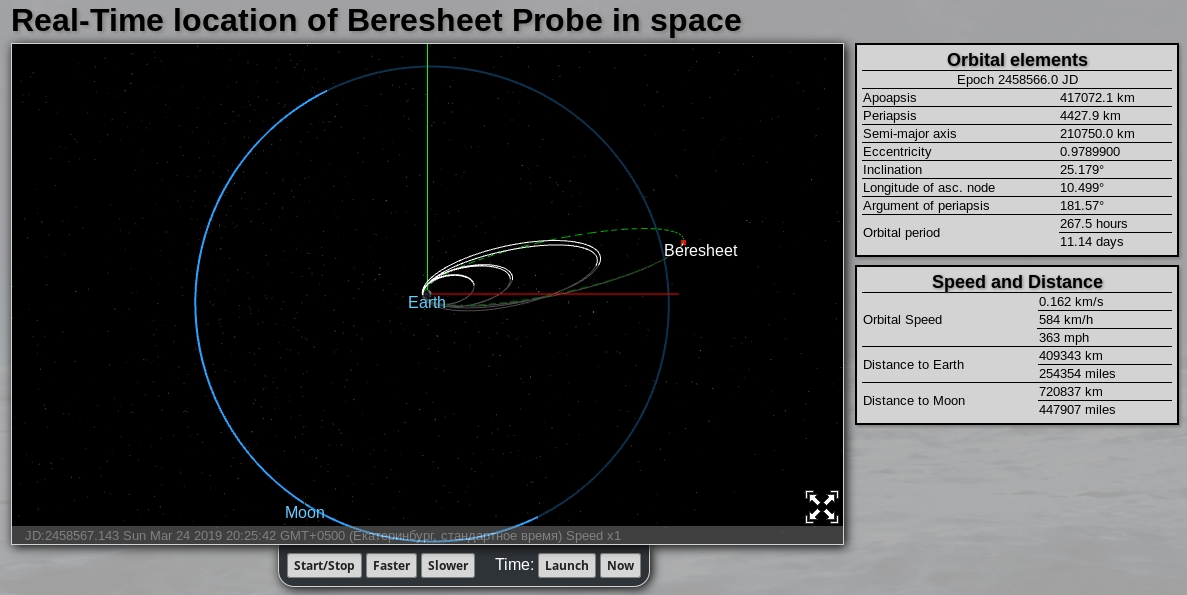The Bereshit lunar mission - eight milestones of success and $ 1 million from the XPRIZE Foundation (subject to a successful landing)
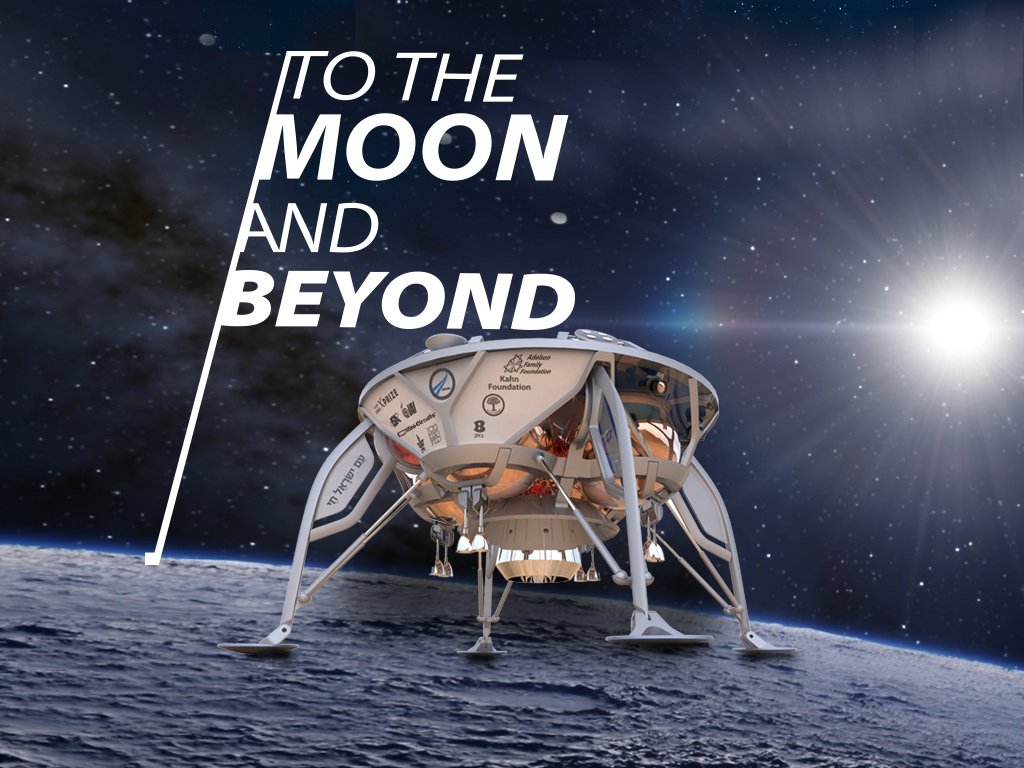
Currently, the Bereshit flight lasts more than 35 days, more than 5 million kilometers have been traveled, a little more than 13 days are left before landing on the moon, which is scheduled for April 11, 2019.
On March 28, 2019, the XPRIZE Foundation, a premium fund for revolutionary innovation support, announced that there would still be a small prize for technical achievements for SpaceIL. But provided that the lunar mission will be completed as planned, and the presentation of the award will be after the analysis of the landing and summing up.
To continue this post: Google Lunar X Prize: There are no winners .
It turns out that there is a winner, or rather, after landing.
Previously published materials about the Bereshit mission:
1. Лунная миссия «Берешит» – онлайн портал с симулятором траектории и мониторингом текущих параметров полета.
2. Лунная миссия «Берешит» – селфи на фоне Земли.
3. Лунная миссия «Берешит» – инженеры в ЦУП SpaceIL и Israel Aerospace Industries (IAI) решили возникшие проблемы.
4. Лунная миссия «Берешит» – характеристики аппарата, серия маневров и самый длинный путь на Луну.
5. Лунная миссия «Берешит» — четвертый маневр завершен успешно, идет подготовка к выходу на Лунную орбиту.
6. Лунная миссия «Берешит» – первое видео с бортовой камеры и новые фотографии в космическом пространстве.
2. Лунная миссия «Берешит» – селфи на фоне Земли.
3. Лунная миссия «Берешит» – инженеры в ЦУП SpaceIL и Israel Aerospace Industries (IAI) решили возникшие проблемы.
4. Лунная миссия «Берешит» – характеристики аппарата, серия маневров и самый длинный путь на Луну.
5. Лунная миссия «Берешит» — четвертый маневр завершен успешно, идет подготовка к выходу на Лунную орбиту.
6. Лунная миссия «Берешит» – первое видео с бортовой камеры и новые фотографии в космическом пространстве.
The main characteristics of the mission and the lunar vehicle "Bereshit":
— начало миссии: 22 февраля 2019 года;
— планируемое окончание миссии: посадка 11 апреля 2019 года, потеря связи с аппаратом 14 апреля 2019 года;
— траектория движения до Луны (фактически – максимальная из возможных): сложная, изменяемая путем выполнения серии маневров (включение двигателей на несколько секунд или даже минут) для увеличения апогея своей эллиптической обиты после каждого витка вокруг Земли.
— высота аппарата «Берешит» составляет около 1,5 метра, диаметр 2 метра (2.3 метра между посадочными опорами);
— масса 530 килограмм с топливом (масса топлива – 380 кг), 150 кг без топлива;
— основной двигатель: модификация LEROS 2b;
— основного элемента бортового компьютера: двухядерный процессор Gaisler HiRel GR712RC;
— шесть 8-мегапиксельных камер Imperx Bobcat B3320C с оптикой Ruda;
— научные приборы: магнетометр, массив лазерных уголковых отражателей.
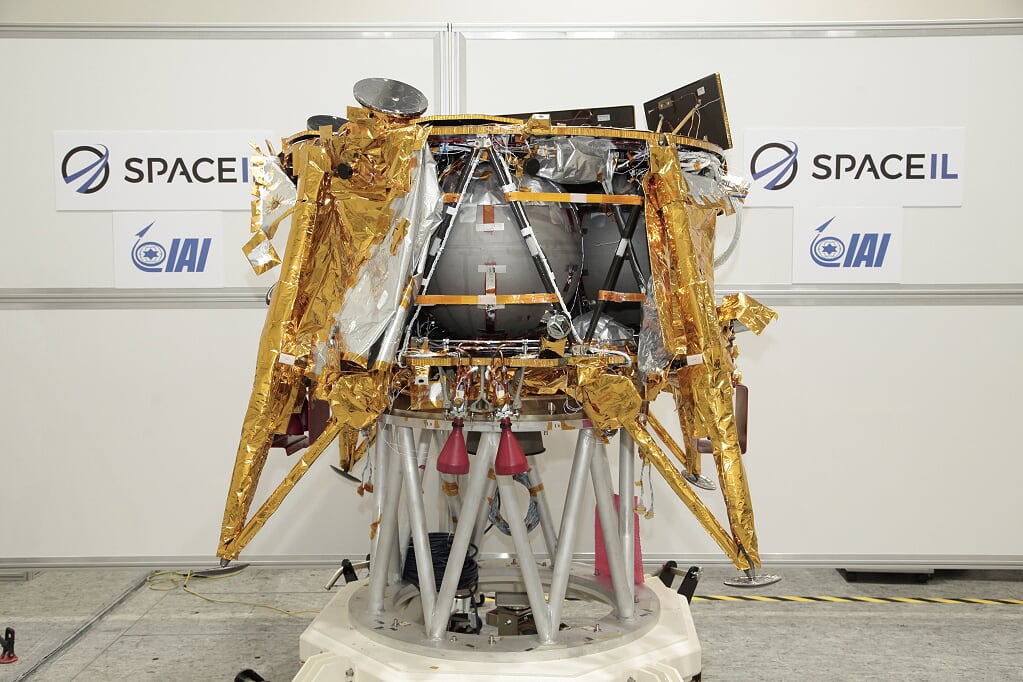
— планируемое окончание миссии: посадка 11 апреля 2019 года, потеря связи с аппаратом 14 апреля 2019 года;
— траектория движения до Луны (фактически – максимальная из возможных): сложная, изменяемая путем выполнения серии маневров (включение двигателей на несколько секунд или даже минут) для увеличения апогея своей эллиптической обиты после каждого витка вокруг Земли.
— высота аппарата «Берешит» составляет около 1,5 метра, диаметр 2 метра (2.3 метра между посадочными опорами);
— масса 530 килограмм с топливом (масса топлива – 380 кг), 150 кг без топлива;
— основной двигатель: модификация LEROS 2b;
— основного элемента бортового компьютера: двухядерный процессор Gaisler HiRel GR712RC;
— шесть 8-мегапиксельных камер Imperx Bobcat B3320C с оптикой Ruda;
— научные приборы: магнетометр, массив лазерных уголковых отражателей.

About the landing site of the Bereshit apparatus:
По расчетным данным аппарат «Берешит» должен совершить мягкую посадку 11 апреля 2019 года на темной лавовой равнине, известной как Море Ясности, недалеко от региона, в котором 11 декабря 1972 прилунились астронавты миссии «Аполлон-17».
В SpaceIL обещали записать посадку на видео и показать через некоторое время в открытом доступе.
Планируемый район посадки аппарата «Берешит»:
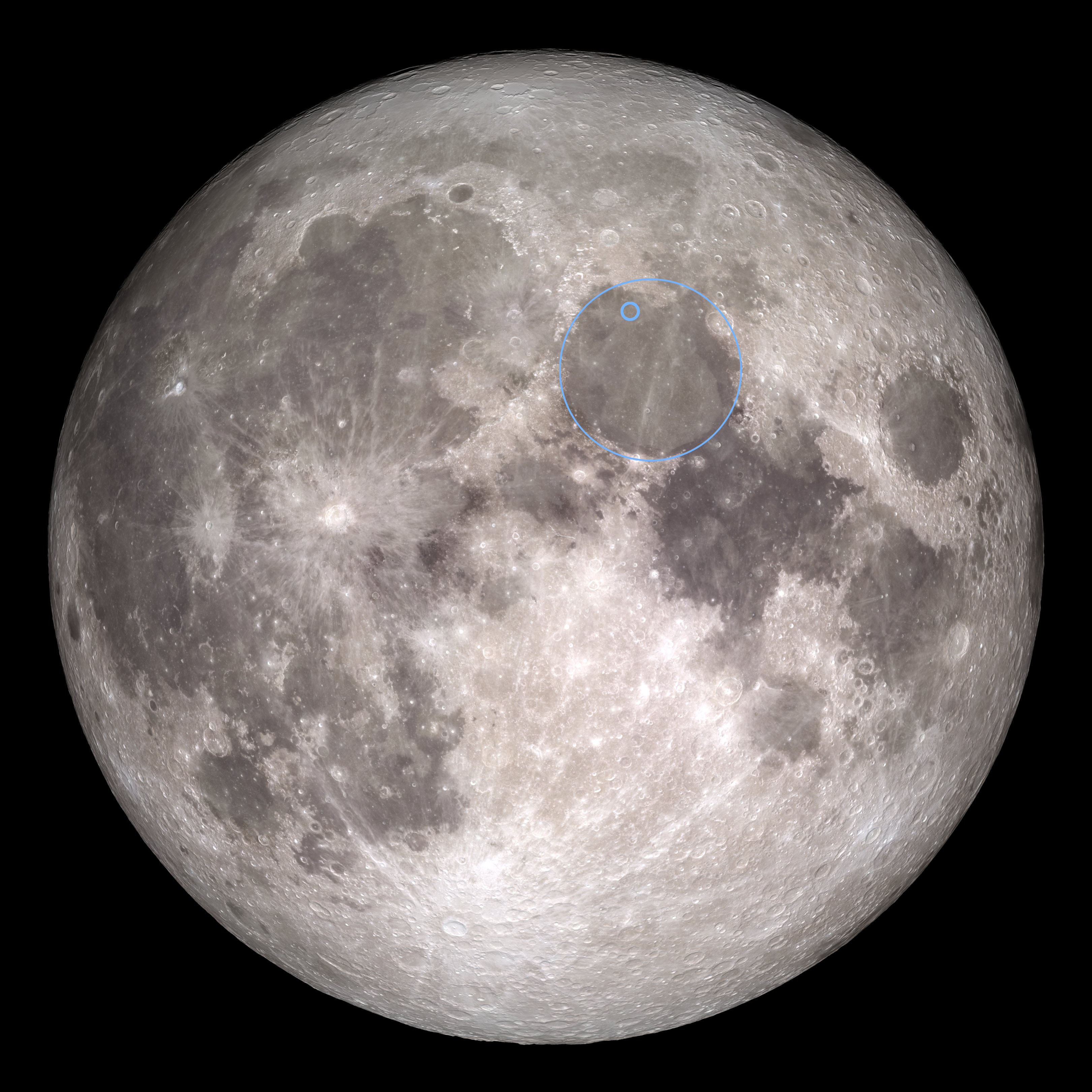


У аппарата «Берешит» нет тепловой защиты и систем охлаждения, расчетное время работы на поверхности Луны примерно двое земных суток (трое суток максимум), потом его электроника выйдет из строя из-за перегрева, связь с аппаратом будет потеряна, и он станет новым лунным памятником в Море Ясности, рядом с Луноходом-2 (миссии Луна-21) и модулями миссии Аполлона-17.
Дата 11 апреля 2019 года выбрана исходя из того, что на поверхности Луны в зоне посадки в это время будет солнечно, но не жарко. А ведь температура на лунной поверхности достигает +127°С в зависимости от степени освещенности.
Таким образом, посадку аппарат «Берешит» должен произвести в северной части Моря Ясности через 48 часов после рассвета в этом регионе, когда температура будет относительно небольшой.
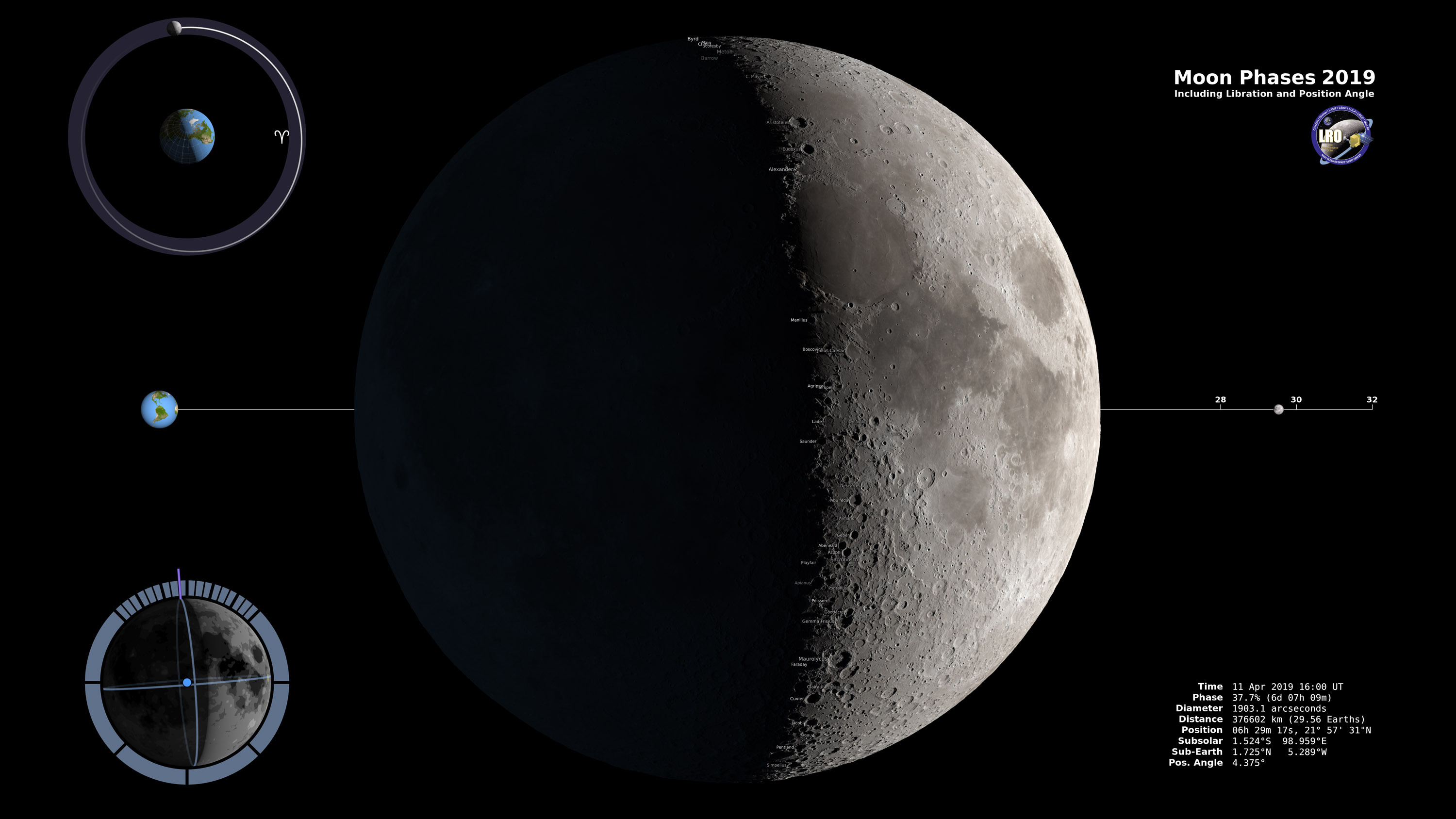
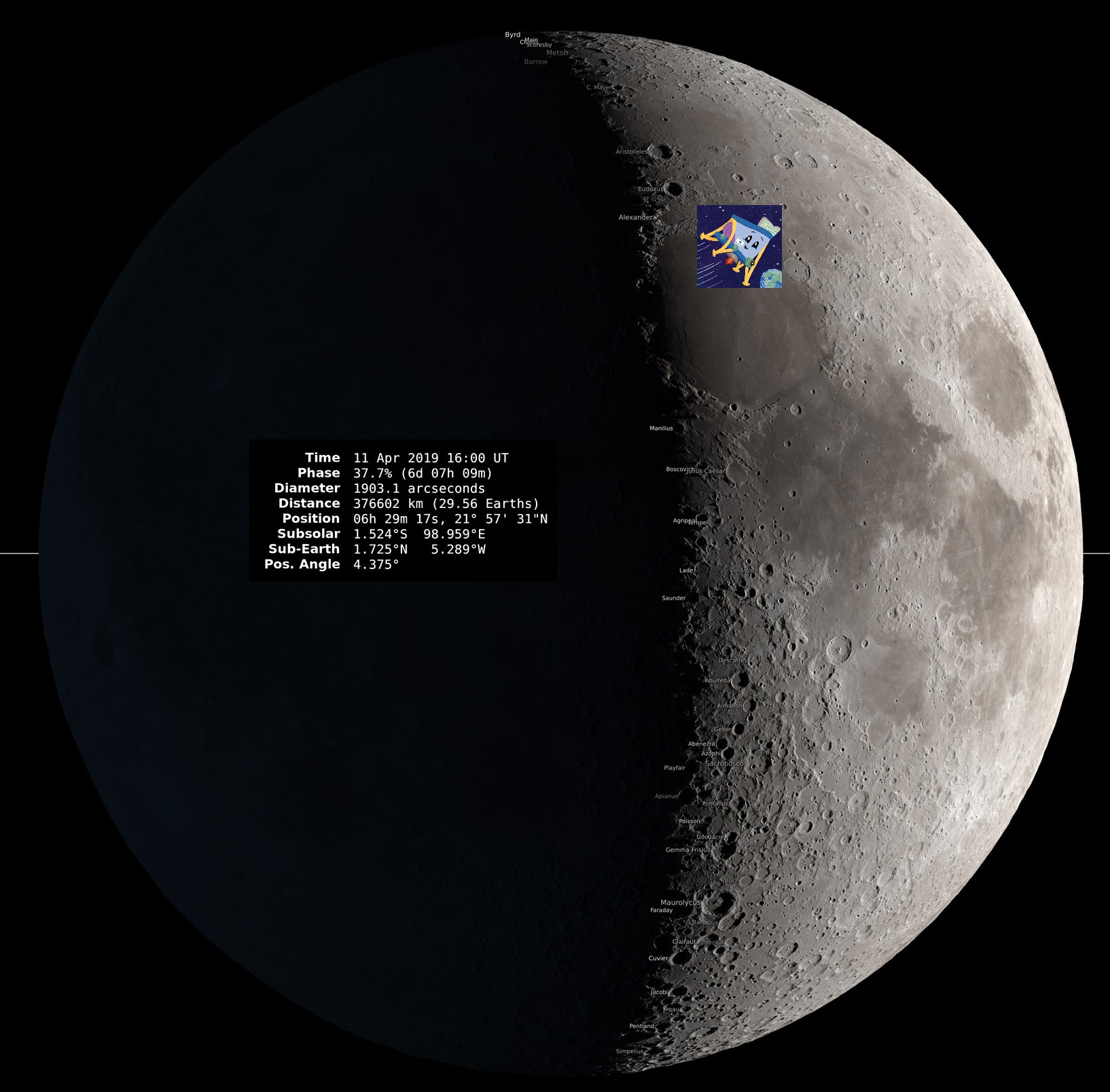
В SpaceIL обещали записать посадку на видео и показать через некоторое время в открытом доступе.
Планируемый район посадки аппарата «Берешит»:



У аппарата «Берешит» нет тепловой защиты и систем охлаждения, расчетное время работы на поверхности Луны примерно двое земных суток (трое суток максимум), потом его электроника выйдет из строя из-за перегрева, связь с аппаратом будет потеряна, и он станет новым лунным памятником в Море Ясности, рядом с Луноходом-2 (миссии Луна-21) и модулями миссии Аполлона-17.
Дата 11 апреля 2019 года выбрана исходя из того, что на поверхности Луны в зоне посадки в это время будет солнечно, но не жарко. А ведь температура на лунной поверхности достигает +127°С в зависимости от степени освещенности.
Таким образом, посадку аппарат «Берешит» должен произвести в северной части Моря Ясности через 48 часов после рассвета в этом регионе, когда температура будет относительно небольшой.


The difficult way to implement the Bereshit mission from SpaceIL:
More than eight years ago, SpaceIL was created, which is supported mainly by private investors, including American tycoon Sheldon Adelson and billionaire Morris Kahn, who are also co-founders of Amdocs (DOX), one of largest companies in Israel.
SpaceIL employs about 200 people, most of them volunteers, scientists and engineers, who "seek to promote the development of technological and scientific progress in Israel."
The total cost of the development, preparation and organization of all actions for the implementation of the Bereshit project is $ 100 million.
In this publication, there is the cost of the project data more accurately.
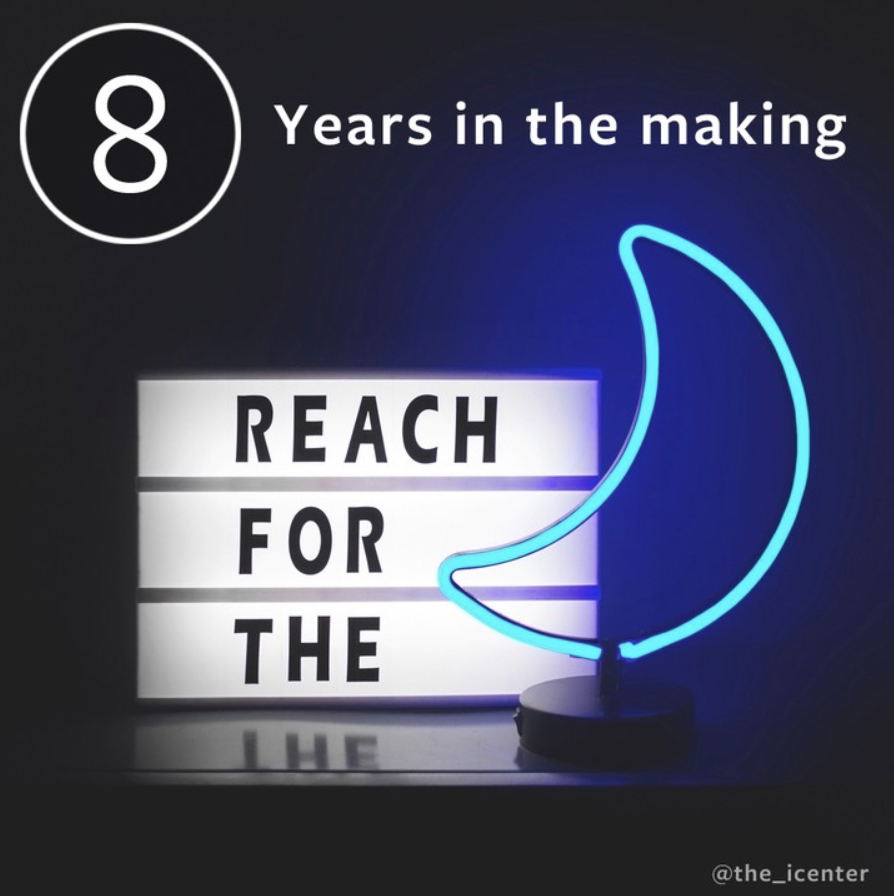
The lunar device SpaceIL called "Bereshit" (Hebrew בְּרֵאשִׁית Beresheet), which is translated from Hebrew means "at the beginning" (the first words of Genesis and its name in Hebrew).

Almost 50 years have already passed since the first man’s landing on the moon (the Apollo 11 mission), and as a result, 6 successful landings on the lunar surface were completed.

More than 6 million kilometers (here it’s actually a bit confused with the understanding of the unit of measure, but the miles in fact are less than in the picture) is the path of the Bereshit device to the Moon.
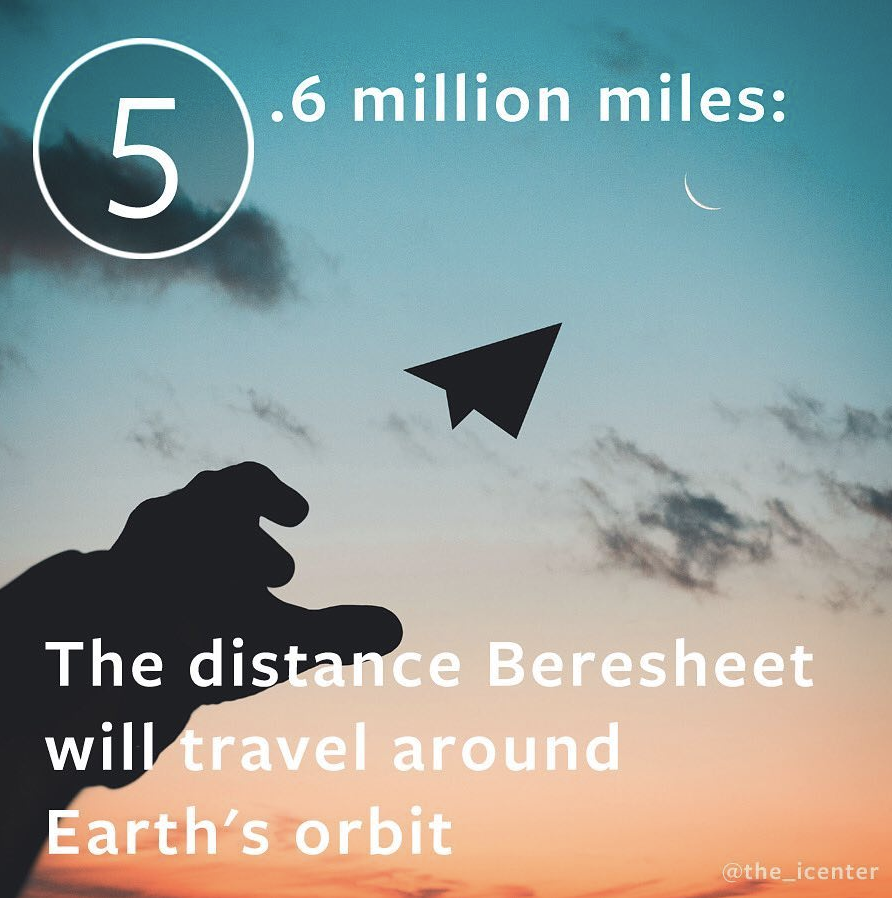
Israel will become the fourth country to organize a landing on the moon of its scientific apparatus, after the USSR (1959), the USA (1966) and China (2013).

Three young engineers founded SpaceIL in 2011: Yariv Bash (an electronics and computer technology engineer), Kfir Damari (a computer network teacher) and Jonathan Weintraub (a satellite systems engineer, a graduate student in biophysics).
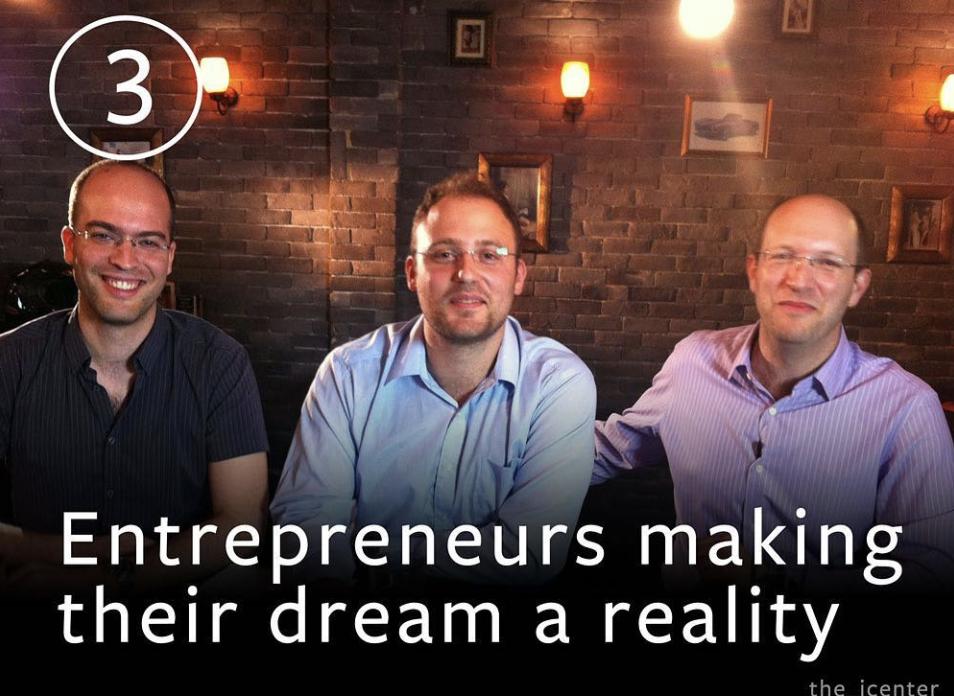
Almost two months (47 days) the flight of the Bereshit apparatus to the moon will last, because it flies along the longest possible trajectory.

The engineers of SpaceIL and the Bereshit apparatus have one attempt to make their mission successful - they can accurately and correctly jump into the Moon’s orbit on April 4, 2019 and then successfully land on April 11, 2019. Well, be proud of your achievements.

The team of SpaceIL engineers works together and under great pressure (psychological and technical, since there were already malfunctions on board the device during the mission, which we successfully managed) with each new day of the flight, so that the landing of the device on April 11, 2019 would be a real date, not calculated.


Telemetry:

SpaceIL does not have its own space communication center, so organizing data transmission between the MCC on Earth and the Bereshit device in space is a complex process that involves:
- the antenna network of the Swedish Space Corporation, thanks to which the Bereshit device receives navigation commands and its trajectory is tracked;
- NASA's long-distance communications network (DSN) for controlling the Bereshit spacecraft and transferring scientific data from the spacecraft to Earth after it landed on the moon.
Checking communication channels:

Prize from XPRIZE:
Eleven years ago, Google announced the launch of the competition, called the Google Lunar X Prize (GLXP). The winner was to be a company or an individual who could send an autonomous apparatus to the moon, not even a complicated one.
However, according to the terms of the competition, the device should be able to crawl, drive about half a kilometer on the surface of the moon, transmitting video and telemetry to Earth.
In 2018, it was announced that the competition ended without a winner.
However, of the 16 projects, only one is currently in the final stages of implementation - a flight to the moon.

On March 28, 2019, in Los Angeles, the XPRIZE Foundation announced that they had decided to award SpaceIL with an incentive prize (the so-called MOONSHOT AWARD) of $ 1 million for acknowledging technological advances and fulfilling the lunar mission.
Of course, the official awarding of the SpaceIL team will be made upon the successful completion of the lunar mission, so SpaceIL employees will also have a tight schedule of events and meetings from April 13, 2019, in which XPRIZE now has reserved time in advance so that later it will not wait in line with the award .
Why create such a situation and give a bonus?
Firstly, to reward the project team and show that the achievements of engineers are expensive, because it took a lot of nerves, thousands of hours to calculate the optimal flight scheme and eight years of work to complete the mission.
Secondly, to make it clear to other teams and project participants that everything is just beginning! And then we are waiting for new flights of commercial vehicles to the moon, which diversify the existing and outdated engineering and technical fleet of moon rovers and descent modules.
Thus, XPRIZE wants to stimulate the rest of the international teams to fulfill their ambitious lunar missions in the future.
XPRIZE is optimistic that the first landing of a private device, such as the first drop of a knuckle in a domino, will further trigger a chain reaction that will launch a new era of affordable and diverse commercial missions to the Moon and beyond.
Although, it always starts with calculations and a whiteboard with markers ... I
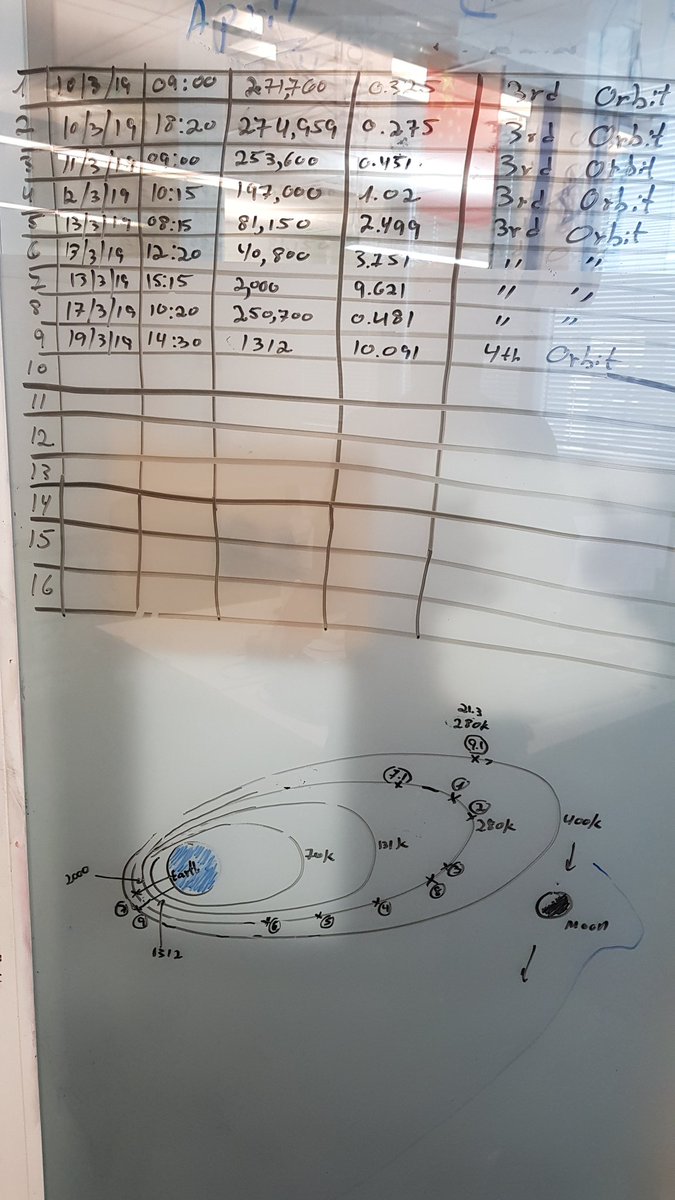
invite everyone to a special webinar “Beresheet, Israelis Reach to the Moon” , which will be held on April 2, 2019 (8:00 PM: Moscow time).
Link to register for the event .

Do not forget to monitor the Bereshit mission using:
- an online resource with a simulator and real-time data on the current state of the Bereshit mission;
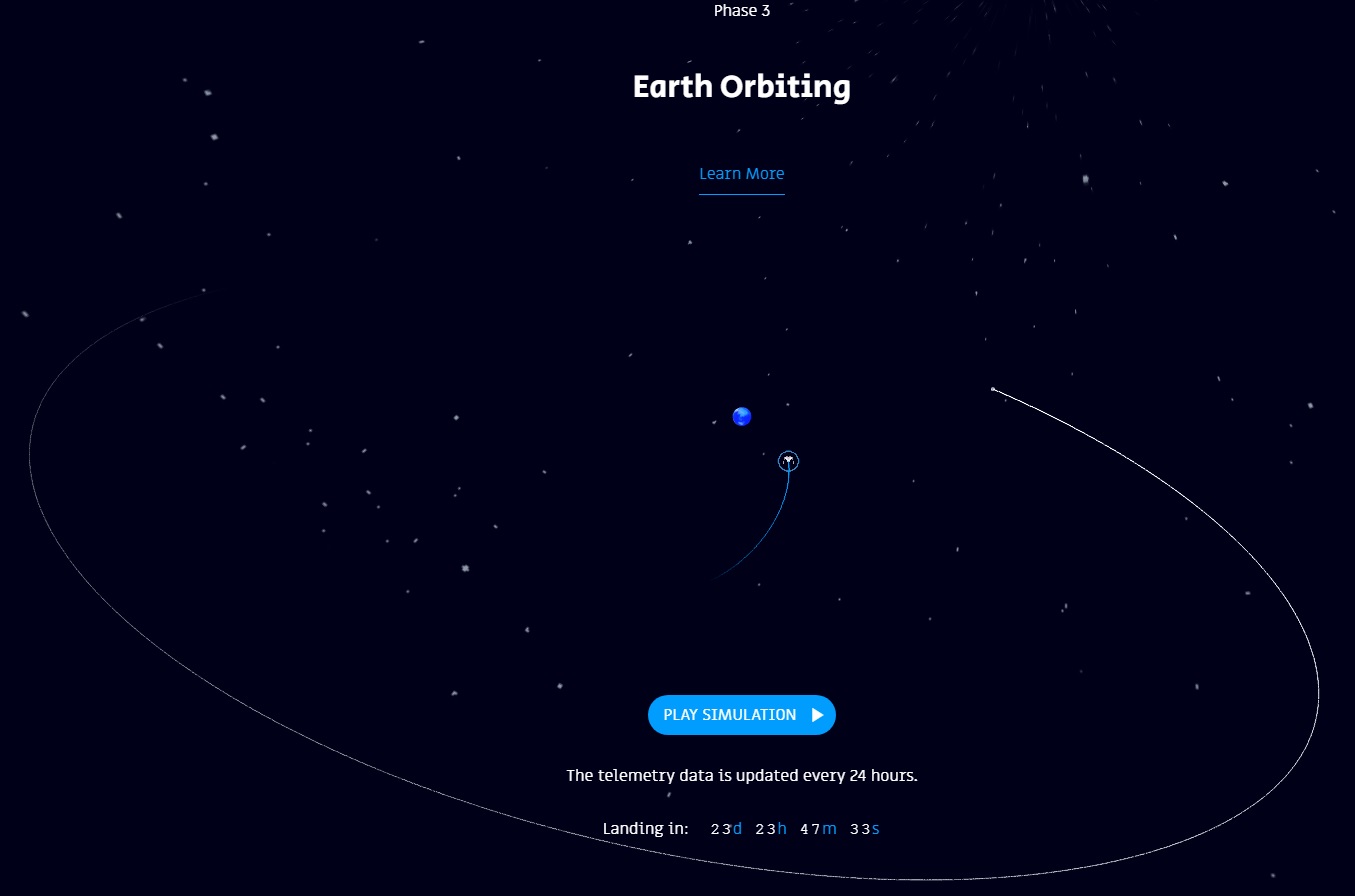
- online simulator NASA "Eyes on the Solar System . "
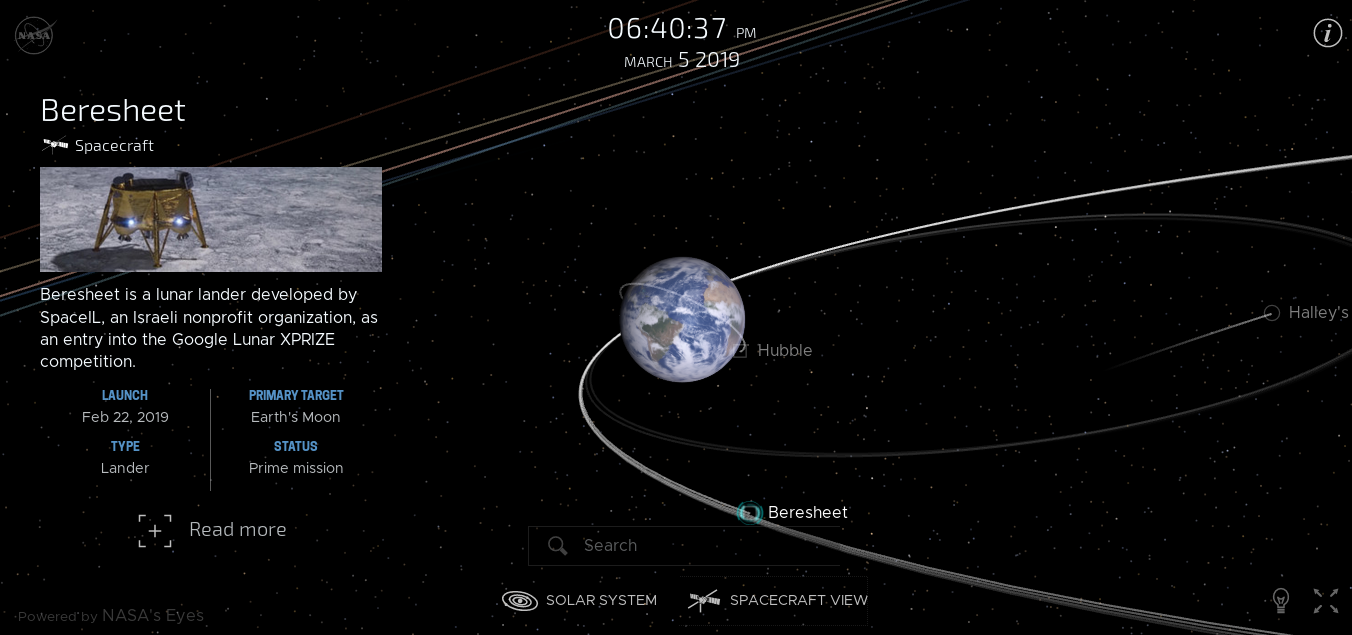
It also turns out that there is such an interesting portal for exploring the Bereshit mission and monitoring the device’s parameters: “ Where is Beresheet Probe ”.
